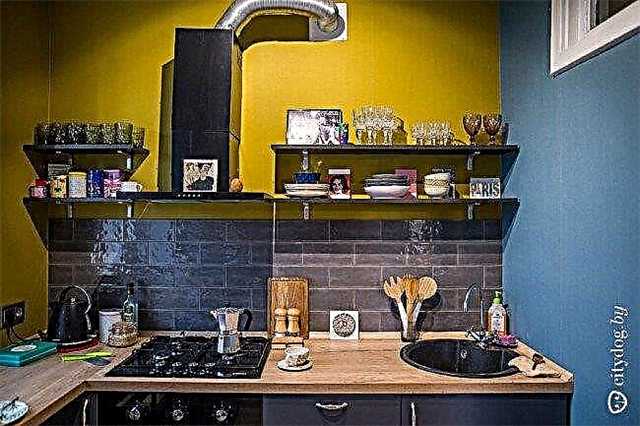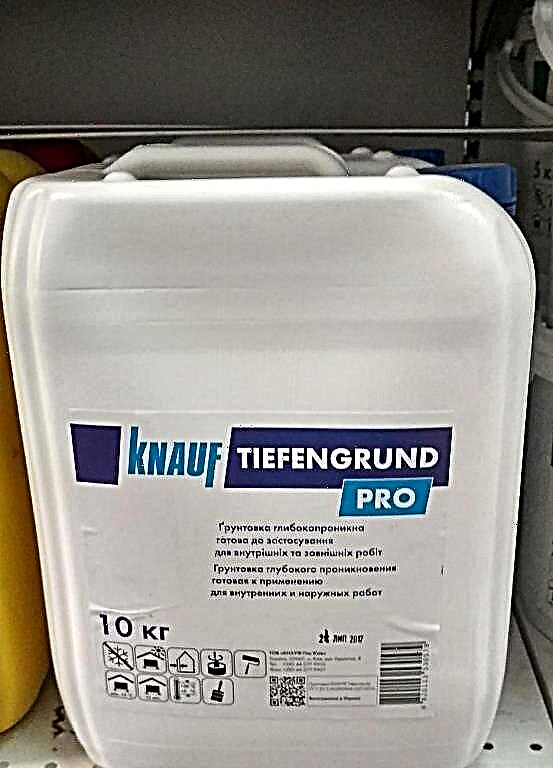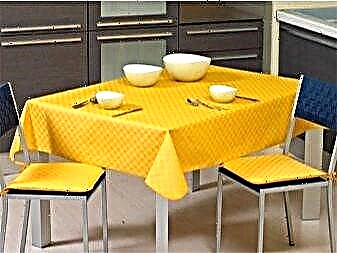Removing the old coating based on liquid wallpaper is troublesome and dirty, and therefore, before starting work, you should prepare the room. To avoid damage to furniture and other surfaces in the room, it is recommended that you follow these steps:
- All furniture is taken out to the next room. If this is not possible, the furniture is tightly covered with plastic wrap.
- To avoid contamination of the floor covering, it also needs to be covered with a film, including skirting.
- Platbands from doors are recommended to be carefully dismantled. After finishing work, they are again fixed in place.
- Decorative wiring is removed from the wiring products, and the installation site is sealed with tape.

Necessary tools
Before you remove the liquid wallpaper from the walls, it is recommended to take care of the preparation of the tool. For this work, you will need:
- electric grinders,
- spatulas of different sizes,
- metal scraper
- a brush or roller for applying liquid,
- respiratory and vision protection.
The specific toolbox depends on the option to remove the coating.
How to remove liquid wallpaper
For dismantling varnished wallpaper, can be used only grinders or drills with grinding attachment. This method is associated with a high level of air pollution with small particles of old wallpaper, so when doing such work yourself, you should use a respirator, goggles and protective clothing.
If a wallpaper was not covered with protective compounds, use simpler dismantling methods - using special solutions or ordinary water. The liquid softens the coating, after which the flakes of the old material are removed with a wide spatula.
Before removing liquid wallpaper during repair, it is recommended to prepare a solution that facilitates the task of softening the coating. In addition to ordinary hot water, the following mixtures are used:
- Based on laundry soap. 200 grams of soap are crushed and dissolved in 4 liters of warm water, the resulting mixture should be brought to a boil, allowed to cool slightly, and then proceed with processing.
- Using liquid dishwashing detergents. Any detergent is dissolved in a ratio of 10 to 0.6 with water (10 l of warm water to 600 ml of the product).
- Using vinegar. Vinegar is added to the water, based on the ratio: 8 parts water to 1 part vinegar.
- In stationary trading, you can buy ready-made liquids to remove various coatings.
Firmly adhered materials can be removed using a steam generator. The place to be freed from the old material is carefully steamed, after which the softened mass is removed with a spatula. Instead of a steam generator, a familiar iron and damp, natural fabric are often used.
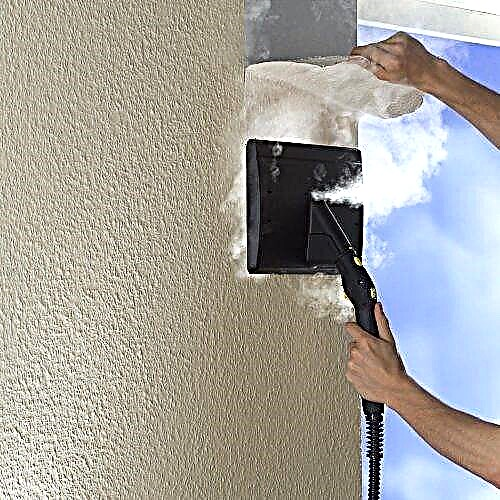
Without cover
To get rid of old liquid wallpaper that has not been treated with protective compounds, it will be enough to use water or special aqueous solutions. To perform the work, you need to prepare the following tool:
- water tank
- a brush or roller for applying water to the surface of the wall (you can also use a spray gun),
- putty knife.
To remove the wallpaper, a solution is prepared in accordance with the recipes described above, or ordinary hot water is taken.
Fluid is abundantly applied to a part of the wall with a roller or brush and wait 15 minutes. During this time, the wallpaper will swell and can easily be removed using a spatula.
In order for the work not to stand idle, it is recommended to notice the time it took to clean the prepared surface and before starting work with a spatula, treat the corresponding part of the wall with water so that it can be saturated and there are no interruptions in the process.
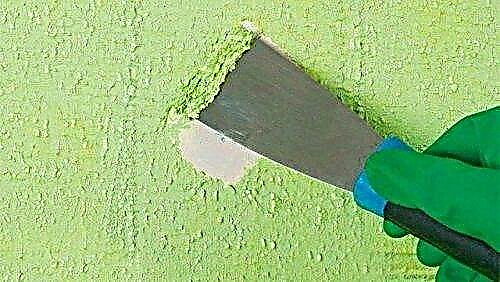
The dismantled material is put into bags for disposal, but if the owners want to reuse these liquid wallpapers, they must be thoroughly dried and packaged until the next repair.
Coated
It is much more difficult to cope with the wallpaper, the surface of which was treated with varnish or other protective material, forming a durable film. To remove such coverage yourself, you will need the following tools:
- a grinding machine or drill with a special grinding nozzle,
- plastic wrap and tape,
- goggles, respirator, protective clothing.
It is advisable for the owners to immediately prepare mentally for the difficult, dusty and long work, or to entrust the removal of the old coating to professional finishers.
Since grinding power tools generate a lot of fine dust, it is necessary to remove all furniture from the room. Close the doorway, floor, windows, wiring accessories and interior details with plastic wrap, fixing it with tape.
They remove the coating with a grinder, and it will be necessary to exert sufficient efforts, since it will be necessary to tear off the protective film and the layer of wallpaper beneath it.
It should be remembered that a prolonged load on the power tool can lead to failure, so you should limit the time of continuous operation to 20-30 minutes, after which it is necessary to give the tool a rest.

The process of removing the old coating is complex and lengthy, you have to be patient. Usually, it takes at least one day for one standard room with an area of 15-20 m 2, and this with a certain dexterity, well, or two or three days for beginners finishers.
Therefore, before deciding to protect the material with varnish, you need to think carefully or be prepared for the labor costs of professional builders who can cope with the old coating faster.
How to remove liquid wallpaper from a wall from drywall
In this case, the wet method will not work - removing the coating from drywall in high humidity conditions will lead to the destruction of the base.
The easiest option to remove wallpaper from drywall: prepare a highly diluted composition of MK glue and apply it to the surface, after which the softened coating is cleaned with a wide spatula. For high-quality surface impregnation, it is enough to wait half an hour.
You can also polish the surface mechanically, and then impregnate the wall with a primer. The base thus treated is ready for painting or gluing with roll materials.
Is it possible to reuse liquid wallpaper
If you carefully remove the coating with a spatula, previously steaming or wetting the surface of the wall, the material can be reused. In order to prepare the mass for application, you must perform the following steps:
- dry pieces of coating removed from the wall,
- determine according to the instructions for this type of wallpaper the required amount of water,
- soak and thoroughly wipe the mixture with your hands,
- leave the mixture for 12 hours,
- add a little water to the settled mixture and mix again.
After that, you can start applying the mixture to the wall.
Wallpaper that was removed using a power tool is not suitable for reuse.
How to remove liquid wallpaper from the walls yourself
 There are several options for cleaning walls from such a coating.
There are several options for cleaning walls from such a coating.
Their use depends on how the coating was applied, on the quality of the material itself.
Therefore, even when applying it, it should be taken into account that sometime it will be necessary to remove all this in order to make the next repair, and clearly understand what effort it may cost.
How to remove liquid wallpaper from the walls: options
Such a coating is a mixture on a special composition with glue containing various fillers: cellulose fibers, silica chips, etc. This universal finishing material, applied to the wall, after drying forms a sufficiently strong coating, which can then be easily removed with a spatula, after soaking the surface with water.
It is more difficult when they are varnished to improve performance. Once upon a time, they will still need to be removed, but you cannot do without a special grinding machine. This is a very complex time-consuming process, so many then prefer to hire craftsmen with special equipment.
Spatula Removal
This method is the easiest, but the work is quite painstaking. Especially if the material has water-repellent properties. It is possible only if the wallpaper was not covered with a protective varnish.
Before removing the coating, it is moistened with water with the addition of detergents. There are special ready-made formulations for sale for these purposes, but other means can also be used: for washing dishes, shampoos, shower gels, etc.
Water with a softener is applied by brush, roller or spray. After this, you need to wait a bit, if necessary, repeat this procedure. In most cases, after this, the liquid wallpaper is very easily removed with a spatula. They can then be dried, crushed, reused as a new coating.
Grinder Removal
 For such work, you will need a grinding machine (you can use a grinder with a special grinding wheel). Special nozzles will also be required so as not to damage the walls during operation. This is a very long job, it requires a lot of effort.
For such work, you will need a grinding machine (you can use a grinder with a special grinding wheel). Special nozzles will also be required so as not to damage the walls during operation. This is a very long job, it requires a lot of effort.
In the process of grinding, a lot of harmful dust is formed, therefore, it is necessary to use protective equipment - special glasses, a respirator. Gloves are needed to protect hands. Strict observance of safety measures when grinding equipment is included is required.
How to remove liquid wallpaper from walls made of concrete, drywall, wood
Such coatings are applied to substrates of various materials. Therefore, when removing them, this should be taken into account and more suitable methods should be applied so that it is easier to remove them and not damage the surface.
- When stripping concrete walls with grinding discs, nozzles are required that limit the deep removal of wallpaper with a layer of concrete.
- Drywall is less durable than the coating, so with the usual method of removal it can be damaged. In this case, a mixture of softening agent with wallpaper glue is applied, which is applied to the surface. After it dries, the wallpaper is easily removed in large layers.
- Before applying liquid wallpaper on wooden surfaces, these substrates are primed and covered with a protective layer of paint. They can be removed from such a surface using an industrial hair dryer, as well as when applying a mixture of a special agent and wallpaper glue.
Recommendations
This coating can be quickly removed using a steam generator. Under the influence of hot steam, the layer softens very quickly.
 With a sufficiently strong old layer, the surface can simply be sanded a little to level it, apply putty, primer, then make a new coating.
With a sufficiently strong old layer, the surface can simply be sanded a little to level it, apply putty, primer, then make a new coating.
There are enough ways to independently carry out work to remove liquid wallpaper. You can save on this without using paid services. But if they were varnished, then in most cases you can save a lot of time and effort by hiring craftsmen with special equipment.
How to remove liquid wallpaper from the walls?
PhD, site expert.
An increasing number of discoverers of liquid wallpaper on the Russian market smoothly approached the moment when replacement of the existing wall decoration is required:
- pall, I want something new,
- the life has expired, as a result of which the aesthetic perception has fallen sharply (well, they don’t look more presentable),
- just the owners have changed, for which liquid trellis - not that.
The short period of use of this material did not allow to accumulate a significant amount of information on how to remove liquid wallpaper from the walls. Therefore, many apartment owners do not know which side to approach them if they plan to cope with them on their own.
To assist readers, we will reveal some of the secrets of the technologies used, based on existing information, and explain in detail how to do this.
What tools will be needed
When removing liquid wallpaper in a mechanized way, it is enough: a stepladder (portable platform or a strong table) and a grinding machine (electric drill with a special nozzle).
In addition, you will need a plastic film, a lot, and personal protective equipment from dust: glasses and a respirator.
Manual removal requires the purchase of certain materials:
- dishwashing liquid (liquid soap),
- fabric softener,
- vinegar (9%),
- MK glue,
- special compositions for removing wallpapers, including liquid ones,
- garbage bags.
We emphasize right away - you do not need to buy everything at once. Only those materials that are used in the selected method of removing wallpaper are needed.
You also need to prepare a set of tools and devices:
- stepladder
- putty knife,
- capacity (bucket or basin for water or glue),
- fur paint roller or sponge,
- iron,
- a towel or an old cotton t-shirt,
- personal protective equipment (rubber gloves, goggles, respirator).
Drywall Removal Nuances
How to remove liquid wallpaper when repairing a room with drywall on the wall? Problems arise here: it is possible to remove the applied layer of "liquid plaster" only manually, since the mechanical method is completely eliminated - it is easy to damage the gypsum plaster. Among the manual methods there are also restrictions - you can not use water.
Therefore, varnished or painted liquid trellises on the walls of gypsum plaster cannot be removed - at the moment, technology has not been invented. Here is one option: to polish the surface of the wallpaper, primer and putty for further decoration: painting or pasting with tapestries.
How to remove liquid wallpaper from a wall from drywall, if you can not use water? Wallpaper glue MK will help. It is diluted to a more liquid state than indicated in the instructions and spread on the wall. After 20-30 minutes, “silk plaster” is removed with a spatula. If the preparation of the walls for pasting was carried out according to the instructions, no problems should arise.
Conclusion
Liquid trellis can be removed mechanically (applied paint, varnish) or manually (without application).
For manual removal, you can use water or special mixtures prepared at home or purchased.
Problems arise when cleaning old plasterboard sheets. Processed wallpapers cannot be removed - only preparation for the use of a different type of finish (paint, trellis). Unpainted "liquid" plaster "is removed using wallpaper glue, for example," Methylan ".
What is liquid wallpaper
The material is small flakes, similar to sawdust, which are glued to the surface using a special composition. At first they were made from pure cellulose, and thanks to this they got their name. Liquid wallpaper itself is smooth, but if desired, a texture roller can give them a relief pattern. The main advantage of such a coating is the ability to lie down even on uneven surfaces, while they do not need to be customized, since they have no seams.
Is it possible to apply a new coating on old liquid wallpaper
It is not recommended to apply a new coating to the old one due to the risk of bacteria and mold development on the old coating, as well as under its surface. It will be possible to get rid of plaque only with the help of special tools that are valid only after removing the old coating.In addition, due to old liquid wallpaper, the new finish may be uneven.
Preparatory work
 First of all, you need to stock up on materials and tools. To work, you will need:
First of all, you need to stock up on materials and tools. To work, you will need:
- polyethylene film,
- bucket,
- sponge,
- drywall knife,
- steam generator
- spatula "tiger",
- metal scraper.
The main recommendations for removing wallpaper:
- Depending on the technology you need to stock up on the appropriate tools.
- Often, a tiger spatula is needed when working, the appearance of which resembles a roller with needles.
- Using a sponge, it is convenient to apply water to the surface.
- A steam generator will help make coating removal less time-consuming.
- Also, do not forget about protective materials that will help keep furniture and flooring indoors. For protection, you can use a plastic film: before removing it, you need to lay it on the floor. It is better to glue the film around the perimeter of the room to the baseboard with masking tape.
Removal Methods
 The most common removal method is using water. It is necessary to use exclusively warm liquid, which is absorbed as quickly as possible into the finishing material. In addition, water easily dissolves dried adhesive. As a result of getting wet, the wallpaper becomes malleable, as a result of which it is easy to remove it with a metal spatula.
The most common removal method is using water. It is necessary to use exclusively warm liquid, which is absorbed as quickly as possible into the finishing material. In addition, water easily dissolves dried adhesive. As a result of getting wet, the wallpaper becomes malleable, as a result of which it is easy to remove it with a metal spatula.
Wallpaper glue
In some cases, wallpaper glue is used. This may be necessary when the water drains too quickly on the floor and practically does not linger on the surface of the old finishing material. Wallpaper glue in this case acts as a kind of thickener. It can be replaced with any other material that is capable of performing a similar function. Thanks to the glue in the composition of warm water, the liquid will acquire a thicker consistency, and after that it can linger on the wall surface, moreover, it will penetrate quite deep into the material. However, it must be remembered that an excessive amount of thickener is also undesirable, because a product that acts as a binder will simply not give off moisture.
Removing wallpaper applied in several layers
Liquid wallpaper is applied to the wall surface in a small layer. This is explained by the desire to save. And if we take into account the cost of this coating, then this approach is considered quite justified. It must be taken into account if the material is applied in several layers, in which case it must be soaked more than once. The next layer can be removed only after residual removal of the previous one. The procedure must be repeated until the wall surface is completely cleaned.
Steam generator
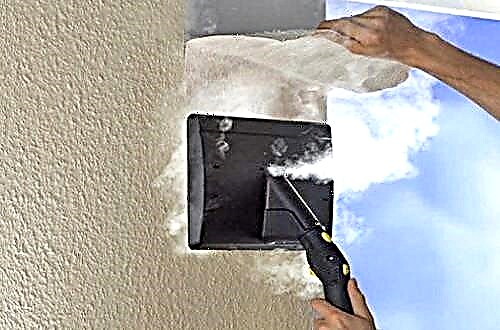 Liquid wallpaper is easy to remove with a steam generator. Under the influence of hot steam, the coating quickly softens, respectively, it is easy to remove. The main thing to remember is that before work it is necessary to prepare the room. If the dismantling technology involves the use of water, then in the apartment you need to turn off the electricity.
Liquid wallpaper is easy to remove with a steam generator. Under the influence of hot steam, the coating quickly softens, respectively, it is easy to remove. The main thing to remember is that before work it is necessary to prepare the room. If the dismantling technology involves the use of water, then in the apartment you need to turn off the electricity.
Chemicals
To remove the old coating, special chemical compounds are also used, which are added to the water, and after the coating has softened, it is carefully removed with a spatula. The composition should be on the surface for two minutes, after which you can proceed to the mechanical stage of removing the coating. This time is enough for the tool to begin to affect the components of the material, destroying their structure. It will be easier to remove the wallpaper if you add a little wallpaper glue to the chemical. The resulting composition should dry on the wall, and then the coating can be removed - it will itself leave the walls in large pieces.
Sander
 To remove wallpaper, you can use a grinding machine. It must be pressed strongly enough to the surface, which will require considerable physical effort, but the speed of the work will be much higher. It should be borne in mind that with this method a lot of dust is generated, so it is recommended to use a respirator and safety glasses.
To remove wallpaper, you can use a grinding machine. It must be pressed strongly enough to the surface, which will require considerable physical effort, but the speed of the work will be much higher. It should be borne in mind that with this method a lot of dust is generated, so it is recommended to use a respirator and safety glasses.
What to do with liquid wallpaper after removal
If necessary, the wallpaper can be reused. In this case, the number of such repetitions is limited by the state of the removed finishing material, therefore, it is necessary to carry out the removal carefully. In order to preserve liquid wallpaper, it is necessary to prepare a mold of a suitable size in advance and put the dismantled finishing material there. The next step is to remove excess moisture and prepare the captured wallpaper for storage in a dry place. To reuse this coating, you need to add a little liquid and stir the resulting mass until the desired consistency is achieved. Material that has already been used is applied in the same way as new material.
How to remove liquid wallpaper from the walls, if you need to completely update the interior
You need to think carefully before dismantling this coating, since it has many advantages. Here are the main ones:
- protection of walls against moisture,
- high fire safety,
- excellent sound insulation properties
- ease of use
- Due to antistatic qualities, dust practically does not settle on the surface.
If you choose the right pattern, you can profitably transform the interior, making it elegant and luxurious. Of course, there are some drawbacks to liquid wallpaper. The main one is the complexity of dismantling. This process is quite laborious.
Before removing the old liquid wallpaper, it is necessary to conduct special training:
- selection of special devices and tools,
- procurement of necessary materials,
- bringing the room into an appropriate state suitable for this work.
Usually, at the end of dismantling, a lot of dirt, dust and other construction debris is formed. How to simplify the cleaning of the room after I managed to remove the liquid wallpaper? Before starting work, it is necessary to carry out a number of preparatory measures:
- All furniture is taken out of the room (if possible). Heavy interior items can be left indoors, pushed away from the walls and covered with plastic wrap.
- The floor with skirting boards is covered with film.
- The window opening (along with the window sill and the frame) is also tightened with polyethylene.
- It is advisable to dismantle the door trims before removing the liquid wallpaper. The door itself is wrapped with protective material.
- Lighting devices (chandeliers, sconces, spotlights, etc.) are also covered.
- The decorative elements of sockets and switches are dismantled.
- The switches and sockets themselves are sealed with masking tape.
It is necessary to carefully prepare the room if you are going to remove liquid wallpaper using a grinder.
What tools will be needed to remove liquid wallpaper from the walls:
- knives
- metal spatulas,
- grinder machine,
- wide brush
- building hair dryer
- special products (dissolved in water),
- masking tape.
How to remove liquid wallpaper from the walls at home with special solutions
If the liquid wallpaper is not varnished or painted, you can remove it with water. Also, special solutions are used for this. The choice of mixture is influenced by the type of glue that was used to mount the coating. For example, PVA can be easily removed with a home-made liquid. To remove liquid wallpaper, you can use a damp cloth and iron as a steam generator. You will also need a spatula.
The choice of solution depends on the density of the coating. But most often, the lining of liquid wallpaper is easily soaked with ordinary heated water.
But for the same purposes, any detergents (soap, shampoo, dishwashing liquid, etc.) are also perfectly suitable. For health, such solutions are not dangerous. Specific odors in these products are usually absent. After this treatment, the coating quickly becomes soft, as a result, liquid wallpaper can be easily removed.
The following are some examples of homemade solutions.
Mix No. 1. 2 tablespoons of hair conditioner and the same amount of vinegar dissolve in 5 l of water.
Mixture No. 2. To remove liquid wallpaper, you will need:
- four liters of water
- a piece of laundry soap.
The grated soap is dissolved in water, then the liquid is brought to a boiling state.
Mix No. 3. In 10 liters of heated water, dilute 0.6 liters of fabric softener or the same amount of dishwashing liquid (you can use both products at the same time).
Mix No. 4. 9% vinegar (8: 1) is added to warm water.
How easy is it to remove liquid wallpaper from the wall when the adhesive for mounting the decorative coating is made of modified starch? In this case, enough warm water and a spatula.
How to easily remove liquid wallpaper: step by step instructions
The softening solution must be absorbed after application to the surface, this will take some time.
After preparing the necessary materials, tools and sheltering the room from construction waste, you can remove liquid wallpaper from the walls. How does this process happen:
- The softening fluid is thoroughly mixed. Then, using a wide brush, the solution is generously applied to the wall. For areas with difficult access, a foam sponge or a small brush is suitable. Wait until the liquid penetrates deep into the surface. If necessary, the lining is wetted several times.
How to speed up this process? You can use a regular household hair dryer, intensively warming hard to remove areas.
To easily and quickly remove liquid wallpaper, you can optionally steam them with an iron. Moreover, a steam heater is not needed for this. The procedure is as follows:
- Turn on the iron and heat it to the maximum.
- Then a wet squeezed cloth is applied to the wall.
- After that, this place is ironed five or six times with a hot iron.
- Next, the fabric is removed.
- As a result, liquid wallpaper is easily and quickly removed with a spatula.
If you do everything according to the above technology, you can remove liquid wallpaper from a specific section of the wall in just a couple of minutes.
It is easy to soften the modified adhesive with plain warm water. In the same way, they remove the wallpaper if they were glued to PVA glue. The circuit is exactly the same. The only thing that will have to endure more time. So that the finishing mass is wet to the wall, it will take about two hours. And it will have to be moistened repeatedly.
For those to whom these methods are not suitable, a tip: use a hairdryer (industrial). First, the wall is covered with a special solution, after which the surface is heated with a hairdryer. Removing liquid wallpaper after such a procedure is very simple (you can use a scraper). However, in this case it will be impossible to reuse the old coating.
How to remove liquid wallpaper coated with paint or varnish from a wall
Unfortunately, if the wallpaper was previously varnished, they can only be removed mechanically. For example, using a drill with a nozzle or a grinder. This is a very time-consuming process, requiring a lot of time and effort. Tip: Pause more often, otherwise the instruments will fail prematurely. This work is incredibly heavy and dusty.
How to remove varnished liquid wallpaper:
- Room preparation.
- Wearing goggles and a respirator.
- Removing the layer of liquid wallpaper. It is advisable to do the work slowly, with effort pressing the tool to the surface. Compliance with breaks (10-15 minutes every 30-40 minutes of work) will help preserve the strength of the working person. Also at this time, the electric motor will be able to cool slightly. Keep in mind that in 12-14 hours only about 10 square meters is rented. m. wallpaper. That is, to remove coverage in the entire apartment, it will take several days.
When removing the decorative coating, a large amount of dust will be generated, harmful to health. Therefore, it is advisable for the employee to use special protective equipment: a respirator, glasses and gloves. Grinding equipment must be handled with care. It is necessary to strictly observe safety precautions when working with the device turned on!
How to remove liquid wallpaper from drywall, concrete, wood
The bases for such a coating come from various materials. In each case, removing the lining, you should choose the most suitable methods. The main task is to completely remove the liquid wallpaper from the wall, without damaging the surface.
- Before applying liquid wallpaper on a wooden surface, the base is usually primed or painted with a special protective paint. Therefore, to remove the finishing layer from a similar surface, you will have to use an industrial dryer. It is advisable to first apply a special mixture or glue for wallpaper to the wall.
- How to remove liquid wallpaper from a concrete wall? You should use a grinding machine with a special nozzle. This will help prevent accidental removal of the concrete layer along with the wallpaper.
It is better to remove the coating layer from such surfaces manually. Using various mechanisms can damage the base. Water is also not suitable for these purposes.
Modified wallpaper glue makes the task very easy. This material is diluted with water and applied to the surface of the wall. After half an hour, wet liquid wallpaper can be easily removed with a spatula. When the walls are glued in accordance with technical requirements, this usually does not arise.
It is currently difficult to remove varnished liquid wallpaper from a wooden, concrete or drywall base. Such a technology has not yet been developed. The only way to remove such a cladding is by grinding, priming and subsequent puttying of the surface. After that, a new coating can be applied to the wall or glued with wallpaper.

